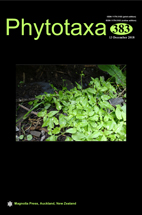Abstract
We isolated two filamentous, non-heterocystous cyanobacteria, namely SCSIO T-2 from Xincun Bay, Hainan Island and SCSIO 43686 from the northern South China Sea, China. The taxonomic positions of the studied strains were determined by a polyphasic approach that used morphological, molecular, and ecological analyses. The two cyanobacterial strains presented different morphology regarding their cell size and sheaths. Sequencing of the 16S rRNA gene of SCSIO T-2 showed 95% similarity with Leptolyngbya sp. CENA 134 (HQ730083) and SCSIO 43686 displayed 97% similarity with Leptolyngbya sp. L21-BG-2 (KJ206339). In addition, the nifH gene sequence analysis of SCSIO T-2 showed 91% similarity with Lyngbya lagerheimii UTEX 1930 (L15550), while SCSIO 43686 had an 88% similarity with Leptolyngbya minuta LEGE 07181 (KC256775). Both strains’ secondary structures of D1-D1’, Box-B, and V3 regions within the 16S–23S internal transcribed spacer (ITS) region were quite distinct from their closely related cyanobacterial strains. In addition, compared with SCSIO 43686, the SCSIO T-2 strain displayed relatively high light utilization yet low sensitivity to light intensity. Based on these characteristics, the name Marileptolyngbya sina SCSIO T-2 is described, and a new genus named Salileptolyngbya is erected to encompass a monophyletic group. We propose Salileptolyngbya diazotrophicum SCSIO 43686 for the type species of this new genus.

